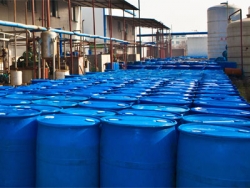Biosurfactants are also used in pulp and paper industry, textile industry, ceramic industry and uranium ore processing. Pellerin and others successfully used the heteropolysaccharide produced by Macrocystis pyrifera and brown nitrogen-fixing bacteria (Azotobacter vinelandii) as a dispersant in the ceramic industry.
Polymeric surfactants produced by Acinetobacter calcoaceticus A2 are used in the coatings industry. In the presence of biosurfactants, the sedimentation speed of the particles slows down and the preparation of the suspension becomes easy, which is very useful for coatings because it increases the spreading ability of the coating and improves the mixing performance.

AEO-7 not only has a greater impact on the ZETA potential of the solution system, but also has a greater impact on the aggregation of carbon black particles than CTAB, SDS and CAPO. Figure 6 shows the effect of different concentrations of AEO-9 on the average particle size and Zeta potential of water-based ink carbon black particles.
The effect of nonionic surfactant on the colloidal stability of water-based ink The effect of nonionic surfactant on the colloidal stability of water-based ink The change trend of Zeta potential and average particle size of carbon black particles in water-based ink colloidal solution after adding AEO-9 and adding AEO -7 is the same.
The characteristics of surfactants, when a substance is added to a liquid, if it can reduce the surface tension, people say that the substance has surface activity. Substances with surface activity are called surface active substances.
From the chemical structure point of view, all surfactant molecules are composed of polar hydrophilic groups and non-polar lipophilic groups. The hydrophilic group makes the molecule extend to the water phase, while the lipophilic group makes the molecule leave the water phase and extend to the oil phase, so the surfactant molecule is an amphiphilic molecule. Their lipophilic groups are composed of hydrocarbon groups, but the hydrophilic groups are varied. Due to the high surface activity of surfactants, they are widely used in various applications such as emulsification, dispersion, solubilization, wetting, foaming, washing, and softening in industrial and agricultural production and daily life.